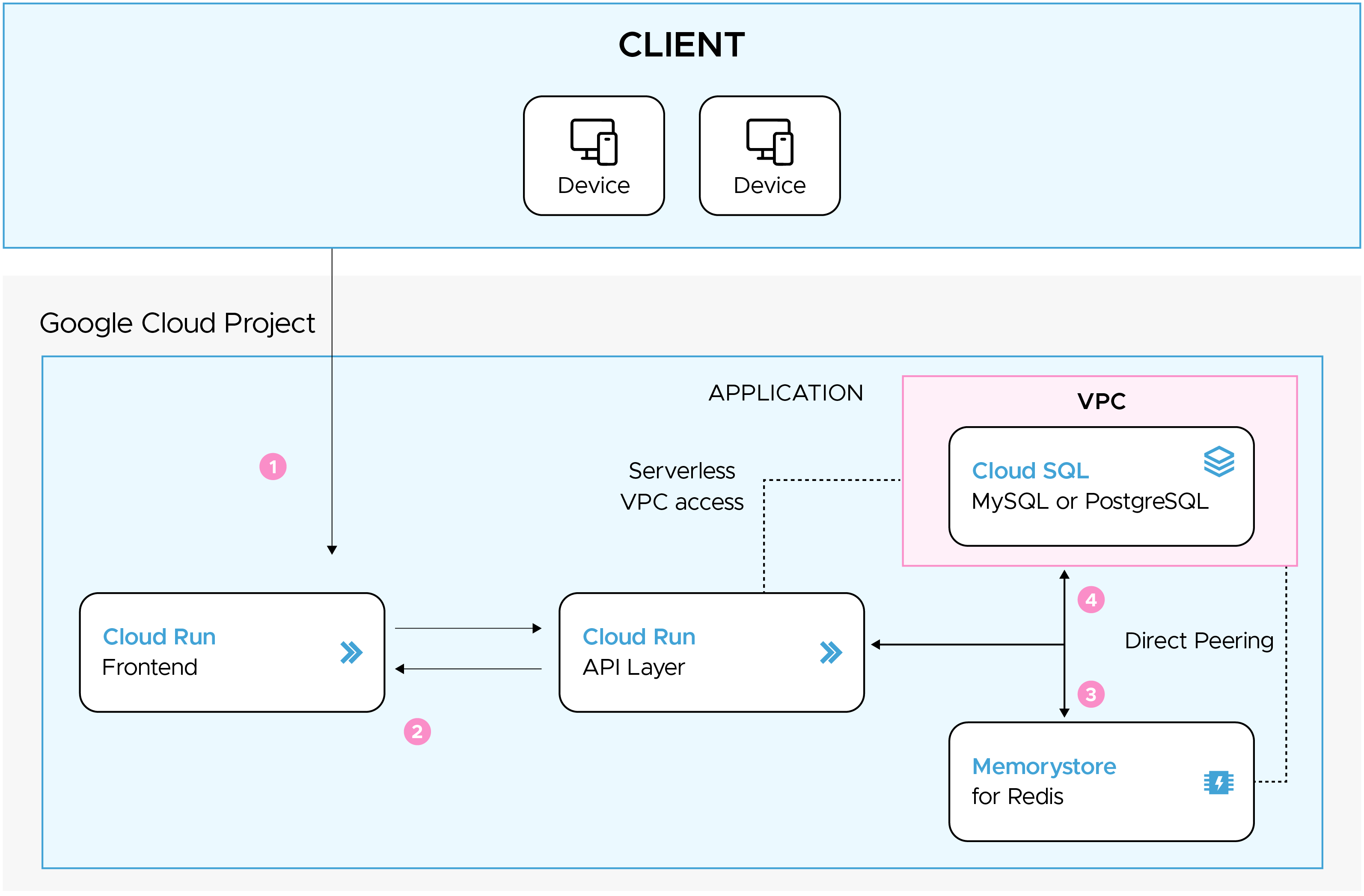DevOps Lead
Rahul is a seasoned DevOps professional with hands-on experience in building, automating, and scaling cloud infrastructure.
Let's be real. When you first dive into the cloud, it's easy to get lost. It feels like walking into a massive hardware store, being handed a pile of parts, and being told, "Build a house. Oh, and it has to be cheap and secure." The same feeling applies when you need to deploy a classic 3-tier application—a frontend, some backend logic, and a database.
So, how do you do it on Google Cloud Platform (GCP) without breaking the bank or sacrificing security? It’s not about finding the cheapest services; it's about making smart choices from the start.
Before we get into the nitty-gritty, let's look at the big picture. This is the architecture we're building—lean, scalable, and secure. It's a real, working reference architecture from Google Cloud that perfectly illustrates the philosophy behind a modern cloud deployment.

As you'll see from the diagram, the secret is a serverless, managed-first approach. Let's break down the services that make this possible.
Your frontend is the face of your application. It’s what users see and touch. The old way involved running a number of VMs with a web server on each, but that required a lot of manual work and wasted money.
The smart, cost-effective, and low-maintenance way is Cloud Run. You just package your web app into a container—whether it’s built with React, Vue, or just plain HTML—and let Cloud Run handle the rest. It scales down to zero instances when no one's using it (hello, zero cost!), and then scales out automatically when a million users hit your site. You literally only pay for the time your code is actually running. For detailed information, see the official Cloud Run documentation.
For all your static stuff—images, CSS, JavaScript files—we'll use Cloud Storage. It's incredibly cheap, massively scalable, and integrates perfectly with Cloud Run. You can even set up a simple Content Delivery Network (CDN) to ensure your content is delivered lightning-fast to users worldwide. Learn more in the Cloud Storage documentation.
This is where your business logic lives, handling API calls and talking to the database. This is another perfect candidate for serverless.
Once again, Cloud Run is our hero. Your API can live in its own container, completely separate from the frontend. This decoupling makes it a breeze to manage and scale independently.
Now for the important part: security. You absolutely do not want your backend API exposed to the public internet. Instead, we'll use a VPC (Virtual Private Cloud) network to create a private, isolated space. Cloud Run can then be configured with a Serverless VPC Access connector, allowing your backend service to securely and privately communicate with the database, keeping your data locked down. For a deeper dive, refer to the official Serverless VPC Access connector documentation.
The database is the heart of your application. You could run a VM and install a database on it, but let's be honest, managing backups, patches, and replication is a full-time job.
Instead, let GCP do all the heavy lifting with Cloud SQL. It’s a fully managed relational database service that supports MySQL, PostgreSQL, and SQL Server. You get high availability, automated backups, and effortless scaling. While it might seem pricier upfront, when you factor in all the engineering hours you save from not having to be a DBA, the total cost of ownership is far lower. Refer to the Cloud SQL documentation for more information.
And for the most sensitive stuff—your database passwords and API keys—don’t ever hardcode them. Use Secret Manager. This service securely stores and manages all your sensitive data, and your application can retrieve it at runtime. It's an easy way to level up your security posture. Learn how to use it in the Secret Manager documentation.
This architecture isn't just about services; it's about a mindset. By embracing a serverless-first approach, you're building a solution that is inherently more secure and cost-effective.
In short, deploying a 3-tier app on GCP isn't a complex puzzle. It's a strategic design process. By leveraging these powerful, managed services, you build a foundation that is not only robust and secure but also scales with your needs—all without requiring a massive budget.
Speak with our advisors to learn how you can take control of your Cloud Cost